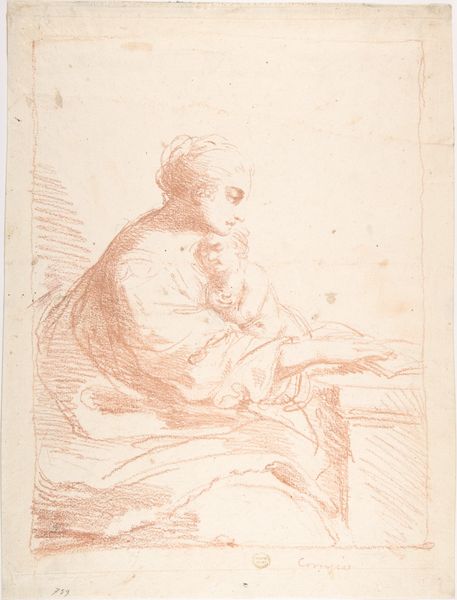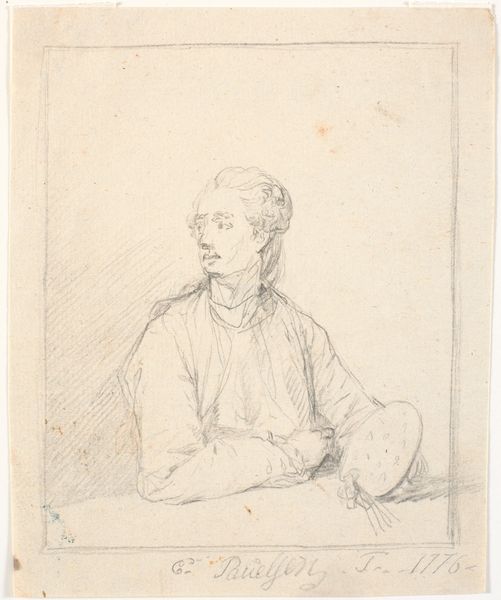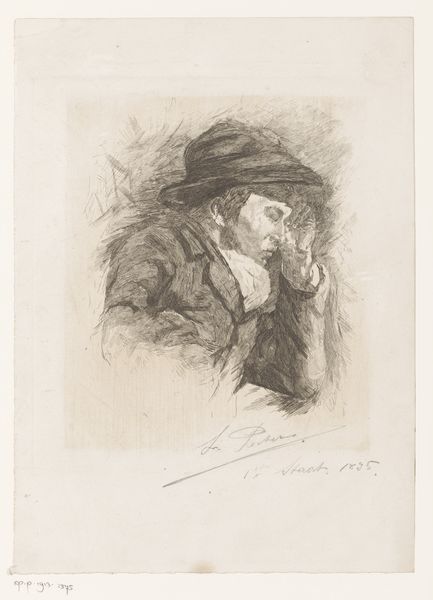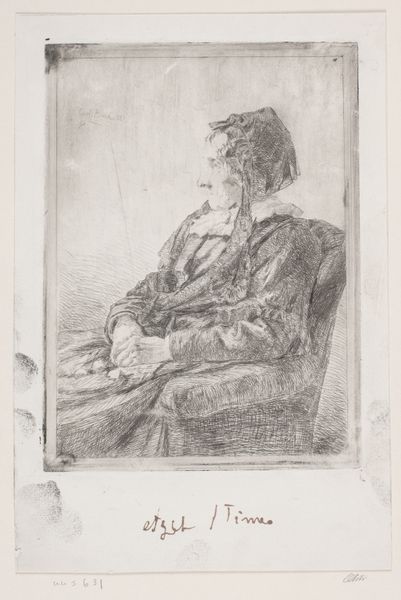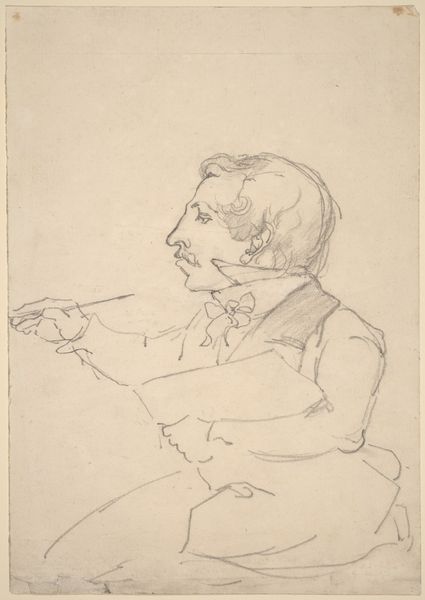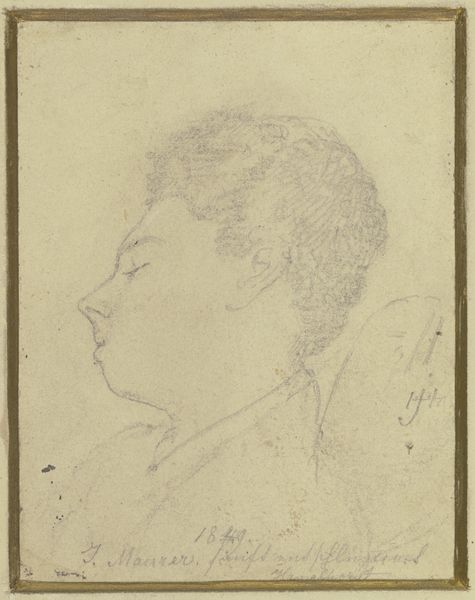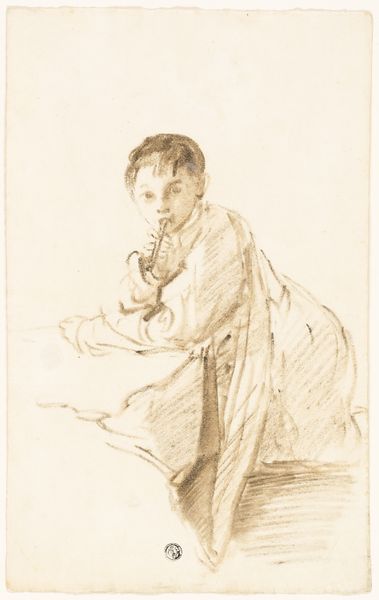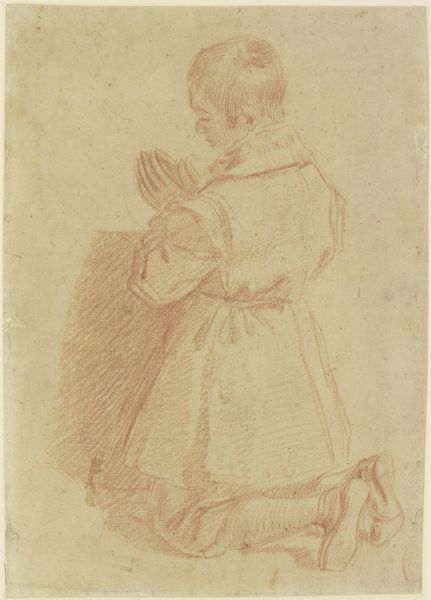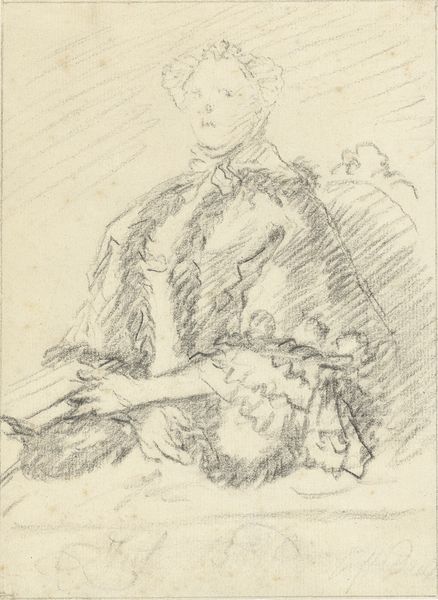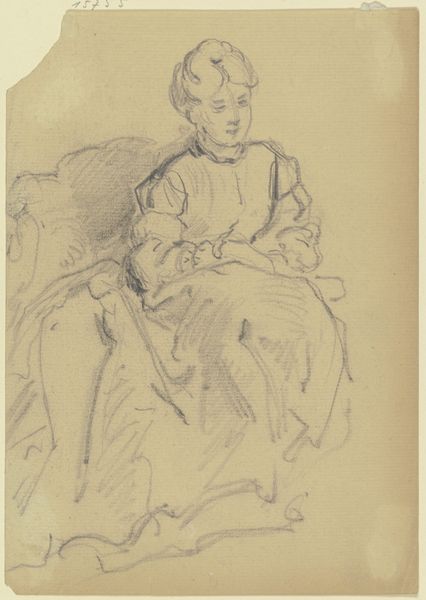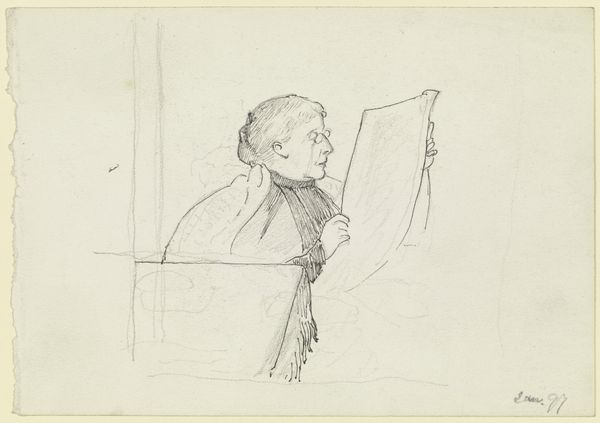
drawing, print, etching, paper
#
portrait
#
drawing
# print
#
impressionism
#
etching
#
paper
#
academic-art
#
realism
Dimensions: 180 mm (height) x 125 mm (width) (Plademål)
Curator: Niels Skovgaard's etching from 1884, "Faster Cathrine," is a work that really exemplifies portraiture from that period. It currently resides here at the SMK, the National Gallery of Denmark. Editor: There's a certain melancholic stillness that just emanates from it, don't you think? The figure seems enclosed, almost as if pressed between the lines of the print. The sitter's expression is hard to read. Curator: Absolutely. The etching process itself, with its fine lines and delicate shading, really contributes to that sense of introspection. Etching allowed artists a greater sense of realism than some other mediums at the time. Skovgaard was attempting to display "truth" through portraiture. We have to ask, how is truth shaped by the forces of the period? Editor: Considering it was made in 1884, what societal conventions might have been weighing on "Faster Cathrine," dictating how she presented herself? Her hair is pulled back so severely, and there's a rigidness in the jaw that to me screams repression. There is this question, also, about what it means to produce an image that aims for a 'realism' or a 'truth.' Are those concepts even knowable in image-making? Curator: I see your point. And it is true that art in that era often served specific societal roles. In this case, the politics are tied to middle class sensibilities. "Faster Cathrine" suggests an intimacy that can also tell us a great deal about gendered representation and perhaps what it meant for Skovgaard himself to interact with family in the creative field. Editor: The subdued tones only heighten the emotional weight of the image. I wonder, was this a deliberate act on the part of the artist to depict Faster Cathrine in such a way? It looks almost like an expressionist turn without quite abandoning the tenets of realism. It might ask us to consider how representation can operate. Curator: Well, it certainly prompts a lot of questions. Thank you for these considerations on an important piece from our collection. Editor: It makes you wonder what her real thoughts were. Definitely food for thought about the limitations placed on women during this time, the social construction of femininity.
Comments
No comments
Be the first to comment and join the conversation on the ultimate creative platform.
